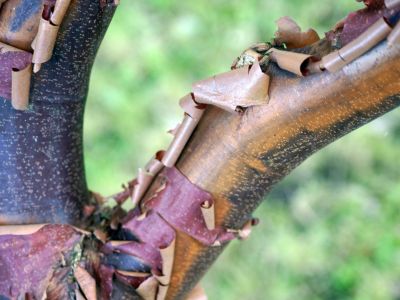What Is a Paperbark Maple?
Paperbark maple trees are small trees that grow to 35 feet (11 m.) over some 20 years. The beautiful bark is a deep shade of cinnamon and it peels off in thin, papery sheets. In some places it is polished, smooth, and shiny. In summer the leaves are a soft shade of blue green on the upper side, and a frosty white on the underside. They grow in threes and can get to five inches (12 cm.) long. The trees are deciduous and those growing paperbark maples say the fall display is lovely. The foliage turns a vivid red or green with marked red overtones.
Paperbark Maple Facts
Paperbark maple trees were first introduced to the United States in 1907 when the Arnold Arboretum brought two specimens from China. These were the source of all the specimens in the country for some decades, but more specimens were located and introduced in the 1990’s. Paperbark maple facts explain why propagation has proved so difficult. These trees frequently produce empty samaras with no viable seeds. The percentage of samaras with viable averages about five percent.
Growing Paperbark Maple
If you are thinking of planting a paperbark maple, you’ll need to know some of the tree’s cultural requirements. The trees thrive in USDA plant hardiness zones 4 through 8, so those living in warm regions aren’t likely to succeed with these maples. Before you start planting the tree, you’ll need to find a good site. The trees are happy in full sun or partial shade and prefer moist, well-drained soil with a slightly acidic pH. When you first start growing paperbark maples be sure to keep the tree’s roots moist for the first three growing seasons. After that the trees only need irrigation, a deep soak, during hot, dry weather. Generally, mature trees do fine with only natural precipitation.
